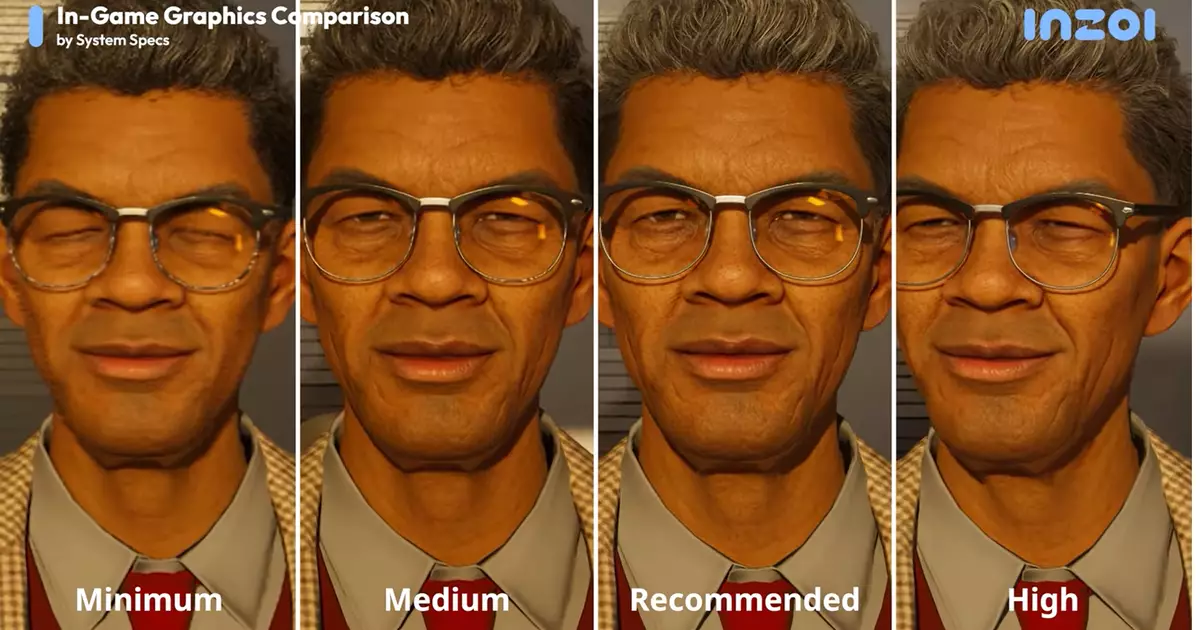The emergence of inZOI, Krafton’s upcoming neighborhood and life management game, has set off a wave of intrigue and skepticism in the gaming community. As someone who has navigated the colorful terrain of life simulation games, I find myself torn between excitement and reservation as we approach the game’s early access launch on March 28th. The interplay of generative AI technology and high-fidelity graphics in inZOI presents opportunities and challenges that are both fascinating and unsettling.
The Generative AI Revolution: A Double-Edged Sword
One of the most significant features of inZOI is its employment of live generative AI, a tool that can create outfits and animate the inhabitants of this peculiar digital realm. Users can leverage a combination of text, images, and video to give life to their avatars, known as Zois. The mere thought of this technology feels both innovative and intimidating. While generative AI can personalize experiences and create unique content, it also raises concerns about quality control and the authenticity of gameplay. Is this reliance on generative technology making us players or merely puppeteers in a sandbox where the strings are tangled?
The implications of “small machine learning” that informs Zoi actions and thoughts further complicate matters. Though such technology runs on the player’s hardware, it brings forth questions about how much of these simulated personalities are genuinely engaging versus algorithmically crafted responses. The complexities of AI integration leave a cloud of uncertainty — will my Zoi be an endearing reflection of my input or just a hollow replica spouting programmed lines? As excitement simmers, I remain skeptical about how well Krafton will navigate these uncharted waters.
Visual Realism or Visionary Discomfort?
Krafton touts inZOI’s photorealistic graphics as one of its signature traits, a move designed to set it apart from the now-mature The Sims 4. However, such realism comes with its own set of unease. The marketing materials evoke a sense of disquiet; the Zois often resemble model-perfect caricatures, manifesting an uncanny valley effect that many find unsettling. As someone who appreciates the stylized charm of traditional life sims, the sight of these eerily perfect figures triggers an instinctive aversion. They evoke the image of a sinister display window, complete with marionette-like poses that seem to beckon, while simultaneously luring me into a digital nightmare.
Rather than simply elevating immersion, the hyper-realism of inZOI risks creating an environment where players may feel alienated rather than engaged. One can’t help but wonder — do we want simulations that mirror reality precisely, or do we crave an imaginative escape that fosters connection and whimsy? It’s essential for game developers to strike the right balance between technological prowess and emotional resonance. Unfortunately, inZOI’s hyper-realistic ambition may have sidestepped this consideration.
The Potato Mode Paradox
Among the details surrounding inZOI’s system requirements, an urgent desire for a “potato mode” emerges in my mind. This hypothetical feature would allow players with lower-end systems to experience the game without sacrificing its spirit. It’s a nostalgic yearning for the rough edges of characters so commonly found in retro games that often held a charm of their own. The idea of scaling down these high-res graphics and embracing the crude aesthetics could lead to a surprisingly delightful experience.
Interestingly, when lower spec settings are thoughtfully implemented, they can lead to distinctive artistic interpretations. Certain titles transcend their original designs when played on modest hardware, transforming into abstract forms that prompt thoughtful engagement from the player. The developers behind inZOI have expressed a commitment to accessibility, promising automatic adjustments and ongoing optimizations — yet, without a true “potato mode,” the potential for discovering beauty in simplicity is left unexplored.
As inZOI prepares to step into the spotlight, it carries the dual burden of expectation and uncertainty. The interplay of cutting-edge technology and traditional gameplay invites both promise and peril, leaving players wondering what this new chapter in life simulation will truly entail. As we await its release, the community is left balancing hope with skepticism, contemplating our role in this evolving digital narrative.

